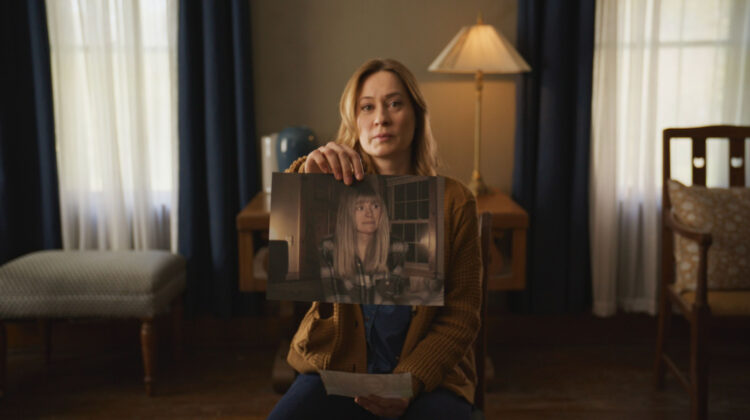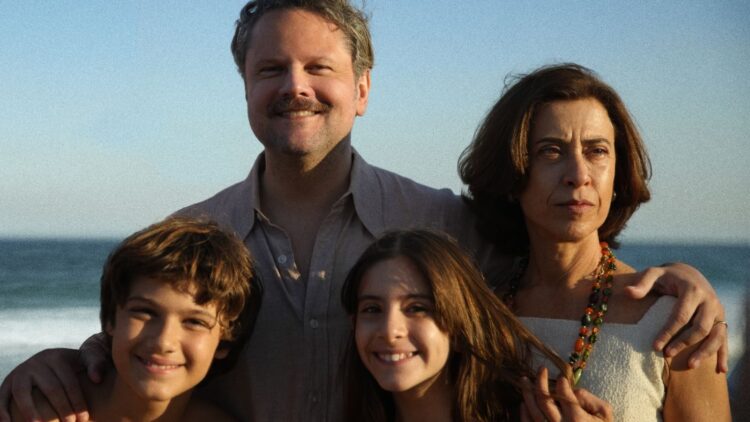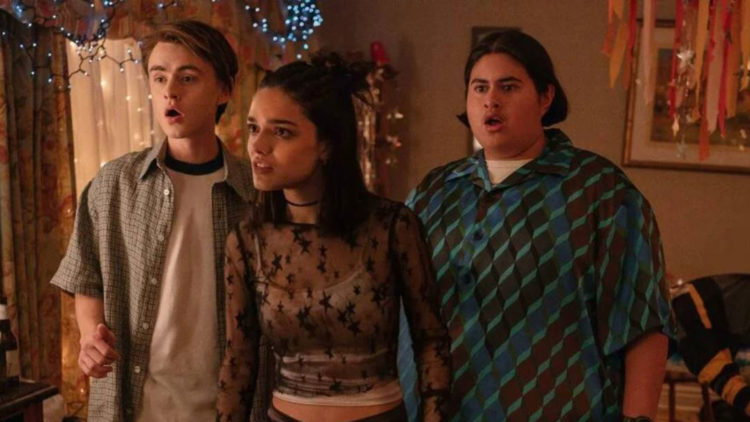

There’s been a bit of mystery surrounding Shelby Oaks, the directorial debut of Chris Stuckmann. A YouTuber who got his start reviewing films and has now amassed over two-million subscribers, Stuckmann pursued his goal of becoming a full-fledged filmmaker, got producers to come aboard, and then pulled off the feat of raising nearly $1.4 million via crowdfunding to finance his film. After making Shelby Oaks, he got Mike Flanagan (Oculus, The Haunting of Hill House) to sign on as executive producer, nabbed a world premiere at the Fantasia Film Festival, and compelled NEON to pick the film up for a wide theatrical release. While he’s not the first person to pull off the transition from YouTube to theaters––you can look to Danny and Michael Philippou’s (aka RackaRacka) breakout success Talk to Me as another example––Stuckmann’s journey to the big screen is about as ideal as a first-time feature filmmaker could ask for.
As for the film itself: any sense of surrounding mystery (including Stuckmann and the marketing team insisting certain details remain secret) will largely conceal the fact that there isn’t much going on within Shelby Oaks. Starting with a blend of mockumentary and found footage, Stuckmann constructs a story that showcases his knowledge of horror films rather than an understanding of the genre itself. With multiple references and inspirations, most from 2000s horror, Shelby Oaks is a dull, uninspired mishmash that’s fussily directed and lacking in scares.
The mockumentary details the story of Riley Brennan (Sarah Durn), host of the YouTube channel The Paranormal Paranoids, where Riley and her three friends would film their adventures at haunted locations. It was a successful series until all four vanished in the late 2000s while filming in the abandoned town of Shelby Oaks, Ohio. All but Riley were found murdered, leaving behind a tape that suggests Riley was taken and/or killed by an unidentifiable man. Riley’s sister Mia (Camille Sullivan) believes she’s still alive, and the film begins 12 years after her disappearance, with the case gone cold and Mia still looking for her. Not long into the mockumentary’s filming, Mia receives a bombshell in the form of a second tape the police never found, and its contents convince her something sinister might be involved with Riley’s vanishing.
Stuckmann cites the 2008 horror feature Lake Mungo as one of his major inspirations, and the mock-doc framing device makes that clear until he diverges in ways that make clear he’s not interested in a retread. But whatever excitement he creates from that initial left turn dissipates once he ends up settling into different retreads. Films like Session 9, The Ring, The Blair Witch Project, Sinister, Hereditary, and Midsommar come to mind throughout, as if Stuckmann takes bits and pieces from each to make his own particular blend. The problem is that he’s unable to make these parts add up to anything satisfying.
That’s partly due to what’s available outside the obvious influences, which include hokey writing and inconsistent direction. Scenes between Mia and her husband Robert (Brendan Sexton III) establish their strained relationship through unconvincing, melodramatic arguments that amount to Mia’s hesitance about starting a family. Sullivan’s performance as Mia varies wildly on a scene by scene basis, going from assured to stilted which reflects the quality of direction and writing more than her abilities as an actor. And much of the setup in the first act doubles as contrivances to justify illogical decisions Mia makes later on, like her repeatedly charging into deserted locations alone at the dead of night or refusing to involve the police or even the documentary crew. These leaps of logic are tough to ignore, and even harder to accept.
Horror elements fall victim to the same issues. While images by DP Andrew Scott Baird are, given the budget, surprisingly stylish, they become distracting in their aggression, never building a sense of dread or foreboding; a montage of Mia researching in a library has the camera hurriedly tracking in different directions while she mostly sits and reads. A later shot where the camera dramatically tracks in on Mia’s car keys as she picks them up recalls Edgar Wright’s jokey montages in Shaun of the Dead and Hot Fuzz more than any sense of propulsion. Once Stuckmann tries his hand at pulling off big scares, it isn’t anything more than the camera sitting still, waiting for something to jump at it.
At the very least, Stuckmann’s earnestness as a horror fan is apparent throughout Shelby Oaks, even though his admiration doesn’t translate effectively to his filmmaking. He has a large, supportive fanbase eager to watch his work, along with some big names willing to give him a level of exposure well beyond his online audience. And while the film is heavily flawed, it isn’t likely his support will dwindle after. Many are lucky enough to get a feature made; now that Stuckmann has got over this hurdle, he shouldn’t have much trouble getting to make another. Hopefully it will work out better next time.
Shelby Oaks premiered at the 2024 Fantasia Festival and will be released by NEON.
The post Fantasia Review: Chris Stuckmann’s Shelby Oaks is an Uninspired Horror Mishmash first appeared on The Film Stage.



